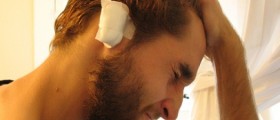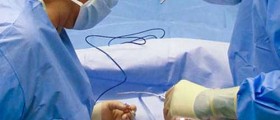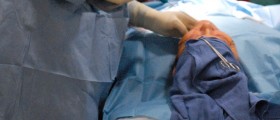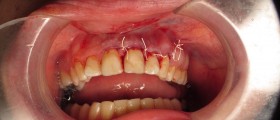Vitrectomy - Overview
Vitrectomy is a surgical procedure in which the vitreous humor is removed. The vitreous humor normally fills up the middle eye. Vitrectomy is indicated in certain patients and the doctor chooses between two surgical approaches, anterior vitrectomy, and pars plana vitrectomy. The procedure lasts approximately 2 to 3 hours.
Once the vitreous humor is removed and the doctor has made of the desirable repair inside the eye the space which used to be filled with the vitreous gel is refilled with silicone or gas-air mixture. These substances are necessary as they emulate the vitreous humor and perform its original purpose.

Vitrectomy is performed in patients suffering from retinal detachment and in case of damage to retinal blood vessels. If left untreated both of these conditions can cause loss of vision. Furthermore, vitrectomy is performed in case of blood contamination of the vitreous gel.
Recovery Time after Vitrectomy
During the recovery time after vitrectomy patients are due to follow doctor's instructions and take all the prescribed medications. The recovery after vitrectomy last approximately 6 to 8 weeks. The process of healing is accelerated by regular application of specific eye drops.
After the very procedure patients are usually kept for one night in the hospital and discharged the day after the surgery. In some cases patients go home the very day they are operated. There is a certain risk of potential complications after the surgery and they include redness of the operated eye, swelling, pain, eye floaters, blurred vision and fluid discharge. The operated eye is covered with an eye patch. This patch is supposed to be worn for a certain period of time and may be only removed during bedtime.
- Seventy-four patients, 46 males (62%) and 28 females (38%), were included. Mean age was 65 years (standard deviation: 12). Median follow-up was 6 months (interquartile range: 3).
- Fifty patients (68%) were pseudophakic. Median pre-op best-corrected visual acuity (BCVA) was 2 LogMAR (interquartile range: 1.22).
- Forty-three of the patients (58%) had preoperative BCVA equivalent of count fingers or less. The majority of the patients (91%) had up to 3-day duration of macular detachment (MD) before surgery. In comparison only 18% of the group of patients with partial recovery of visual acuity after vitrectomy for macula-off RD had been operated within 3 days of MD (p?0.0001).
- In 63% of the 40 cases in whom an optical coherence tomography (OCT) of the fovea could be interpreted, OCT image showed a retained foveal depression of the detached retina, whereas only 35% of the 46 control eyes with adequate OCT imaging showed a retained foveal depression (p?=?0.01).
Vitrectomy Recovery - at Home
As it has been already mentioned patients must follow doctor's orders and this way the healing will be successful and will not last long. Patients normally face swelling, heaviness and eye discomfort but all of these withdraw within several days after the surgery. They must stick to the prescribed medications. The swelling of the eyelid may be reduced with cold compresses or ice packs. Pain which typically occurs after the surgery can be successfully alleviated by over-the-counter pain killers.
Still, the best thing the patient can do is to consult his/ her doctor about the best possible pain killers which can be taken after the surgery. And finally, the patients may also benefit from the face-down recovery equipment which is generally recommended to patients whose process of healing is decelerated.

















Your thoughts on this
Loading...